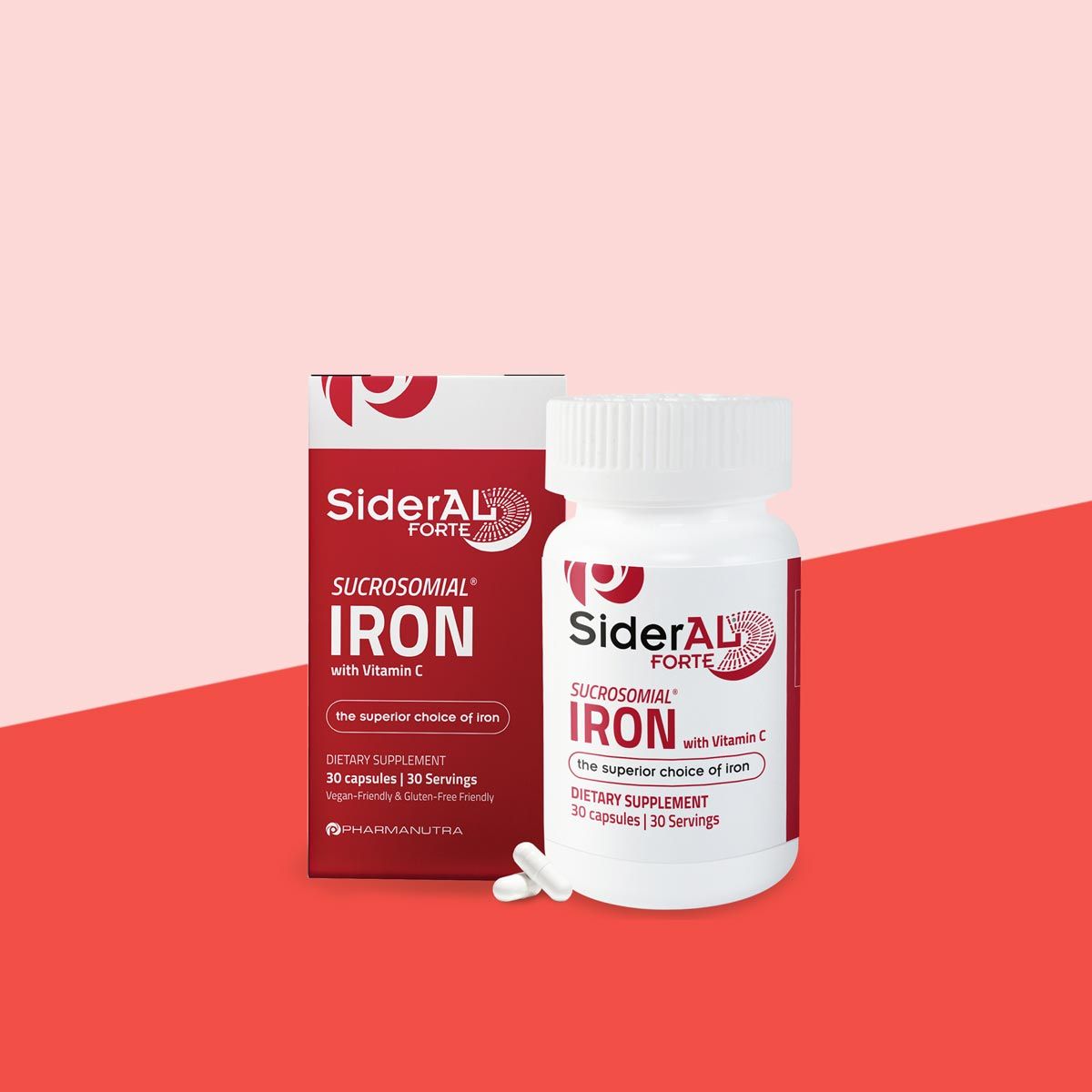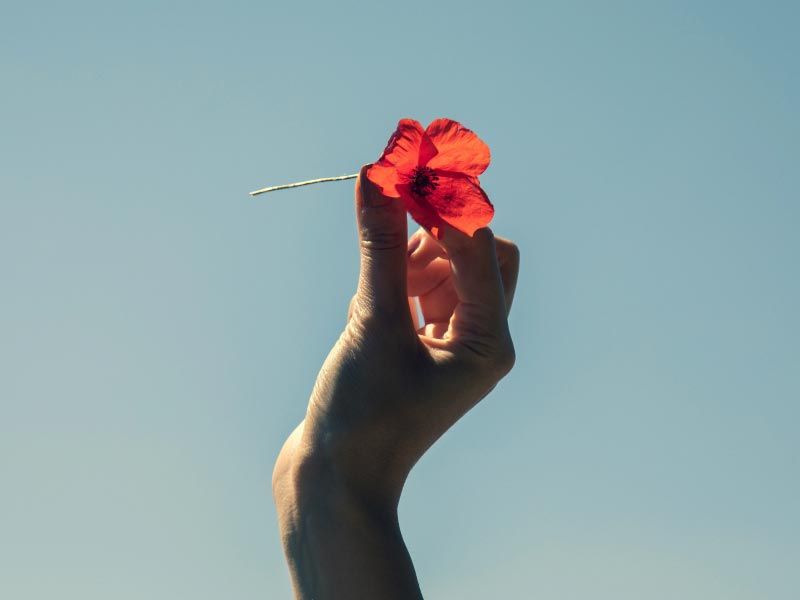
Written by Kathleen Morrison
Medically Reviewed by Andrea Sleeth WHNP-BC, MSCP
Key takeaways
- Low iron can leave you feeling constantly tired, dizzy, short of breath, or moody—even if you’re getting enough rest.
- Women and people with periods need more iron due to blood loss, pregnancy, or breastfeeding, and plant-based diets may require extra attention.
- Early signs of low iron include fatigue, pale skin, hair loss, cravings for non-food items (pica), and trouble concentrating. Anemia is the more advanced stage.
- Diet tweaks, pairing iron-rich foods with vitamin C, and mindful timing can improve iron absorption.
- Supplements, whether oral or IV, are safe and effective ways to help restore iron levels when diet alone isn’t enough—working with a healthcare provider ensures the best results.
Ever feel like no amount of coffee, naps, or pep talks can shake off that tired-all-the-time feeling? If your energy’s on empty, your skin’s looking a little washed out, or you’re finding yourself dizzy, headachy, or out of breath from things that never used to faze you, your body might be trying to tell you your iron levels are low.
Here’s the deal: iron is what helps your blood carry oxygen, which means it’s basically your built-in energy delivery system. When you don’t have enough, everything feels harder than it should, like you’re running a marathon when all you did was walk up the stairs. And because the signs can be sneaky, it’s easy to blame stress, busy schedules, or just “having an off week.”
The upside? Low iron is something you can tackle. A few small tweaks, like adding iron-rich foods to your plate or chatting with a healthcare provider about support options, can help make a difference.
The role of iron in women's health
Iron is your body’s behind-the-scenes hype man. It helps your blood carry oxygen, fuels your energy, and keeps things running smoothly from head to toe. When your iron levels dip, your body can’t make enough hemoglobin (that’s the oxygen-carrying protein in your red blood cells), and suddenly even the smallest tasks can feel like a total energy drain.
Here’s the thing: women and people with periods usually need more iron than men, thanks to monthly blood loss. A quick snapshot:
- Daily iron needs for ages 19–50: about 18 mg (compared to 8 mg for men)
- During pregnancy: jumps to 27 mg to support both you and your baby
But iron isn’t just about energy, it’s also key for:
- Brain power and focus
- Immune health
- Muscle function and overall energy production
Your body stores extra iron in your liver, spleen, and bone marrow, but those reserves can run low if your diet isn’t giving you enough. That’s why heavy periods, pregnancy, or following a vegan or vegetarian lifestyle can make staying on top of iron levels trickier. Plant-based iron is great, but your body absorbs it differently than iron from animal sources, which sometimes means extra support is needed.
If you’re noticing low-iron symptoms, supplements can be a simple, supportive boost. Iron support options and prenatal vitamins are designed to help your body get the lift it deserves.
Signs of low iron in women
Ever feel like you’re running on empty, no matter how much sleep you get? That’s the classic first clue that your iron levels might be low. Fatigue that doesn’t go away with rest is your body’s way of waving a little red flag.
Low iron can show up in a bunch of other ways, too. Some common signs include:
- Pale skin or brittle nails
- Hair shedding more than usual
- Strange cravings for things like ice, dirt, or starch (yep, it’s called pica)
- Feeling short of breath during everyday activities
- Cold hands and feet
- Frequent headaches or dizziness
Nausea can also sneak in, often hitting in the morning or along with lightheadedness when you stand up too quickly. And if you’re on your period, low iron symptoms can be more noticeable. Think heavier bleeding, worse cramps, or feeling completely wiped out during your cycle. Some women even notice restless leg syndrome, where uncomfortable tingling or crawling sensations show up at night.
Your brain feels it too. Trouble concentrating, forgetfulness, or feeling unusually moody can all be part of the picture. It’s easy to brush these off as stress or a busy week, but they’re worth paying attention to.
How low iron differs from anemia
Low iron and anemia are related, but they aren’t exactly the same thing. Low iron, or iron deficiency, happens when your body’s iron stores start running low, but your red blood cells haven’t taken a major hit yet.
What low iron looks like
Think of low ferritin levels as your iron “savings account” running low. Hemoglobin might still look okay, but you’re living paycheck to paycheck with your iron. Mild fatigue, low exercise tolerance, or feeling off in small ways can show up at this stage.
What anemia feels like
Iron deficiency anemia is the next stage, when your iron shortage starts affecting red blood cell production. Symptoms become more noticeable and can include:
- Exhaustion that just won’t quit
- Chest discomfort or rapid heartbeat
- Shortness of breath during normal activities
Your body is working overtime to keep oxygen flowing, which can eventually lead to more serious issues if left unchecked.
Catching it early
The progression from low iron to anemia can take months or even years, depending on diet, blood loss, and overall health. Regular blood tests and paying attention to what your body is telling you can catch low iron before it turns into full-blown anemia.
What causes low iron in women?
Women and people with periods face some unique challenges when it comes to keeping iron levels up. A mix of biological, lifestyle, and dietary factors can make it tricky to maintain enough iron, which is why paying attention to your body is key.
Menstrual cycle and blood loss
The biggest culprit? Blood loss during your period. Heavy periods can make it hard to keep iron stores topped up, and other sources of blood loss can sneak in too. Here’s the rundown:
- Heavy menstrual bleeding: Losing more than 80 milliliters of blood per cycle can seriously impact your iron.
- IUDs and birth control: Non-hormonal IUDs can increase bleeding, while hormonal options usually help keep flow lighter. Tracking your cycle and blood loss can help you spot patterns.
- Other sources of blood loss: Frequent blood donation, internal bleeding from ulcers or digestive conditions, and even long-term use of aspirin or NSAIDs can chip away at your iron.
Pregnancy and breastfeeding
Pregnancy and breastfeeding put your body in “iron overdrive.” Growing a baby takes extra iron for your blood volume and fetal development, which is why many pregnant people need supplements to stay on top of their levels.
Diet and absorption issues
What you eat and how your body absorbs iron can make a difference:
- Type matters: Heme iron from meat absorbs 15–35%, while non-heme iron from plants is less well absorbed.
- Blockers: Coffee, tea, calcium-rich foods, and certain compounds in whole grains and legumes can lower absorption—but soaking or fermenting these foods can help.
- Boosters: Vitamin C can enhance absorption when paired with iron-rich foods like citrus, tomatoes, or bell peppers. Cooking in cast-iron cookware, especially with acidic dishes, can sneak extra iron into your meals.
Medical conditions and genetics
Some health issues can make iron absorption harder or increase loss. Conditions like celiac disease, inflammatory bowel disease, or stomach ulcers can play a role. Genetics can also influence how your body processes and stores iron.
How is low iron diagnosed?
Noticing fatigue, pale skin, or weakness? Those are the hints your body gives when iron is running low. Your healthcare provider can help confirm what’s going on with a few simple steps.
What your appointment might involve
Your provider will likely ask about:
- Symptoms like tiredness or shortness of breath
- Menstrual patterns and blood loss
- Diet, lifestyle, and medications
A quick physical exam might also pick up signs like pale nail beds, a smooth tongue, or a fast heartbeat.
Blood tests
Labs give the clearest picture of your iron status:
- CBC: Checks hemoglobin and hematocrit to see if anemia is present
- Serum ferritin: Shows your iron “savings account”: levels below 30 ng/mL usually indicate low stores
- Serum iron, TIBC, and transferrin saturation: Reveal how much iron is circulating and how well it’s being used
Dietary changes to boost your iron
Boosting your iron doesn’t mean flipping your diet upside down, it’s about making smart, simple tweaks that can help your body get the most from the foods you already eat. The trick is pairing iron-rich foods with absorption boosters and being mindful of what can slow absorption.
Timing can make a difference, too. Iron is absorbed best on an empty stomach or between meals, but if that makes your stomach upset, just pair it with a small vitamin C source, like a splash of orange juice. Little habits—like adding citrus to meals or waiting an hour before your coffee—can help make a noticeable impact over time.
Iron-rich foods to include
Mixing up your sources of iron ensures your body gets both heme (easily absorbed) and non-heme iron:
- Heme iron (animal sources): Red meat, poultry, fish
- Non-heme iron (plant sources): Dark leafy greens like spinach and kale, lentils, chickpeas, black beans, fortified cereals and breads
- Other iron-rich options: Pumpkin seeds, quinoa, dark chocolate, blackstrap molasses
Foods that can help absorb iron
Vitamin C is iron’s best friend. It can help boost absorption and offset blockers. Try pairing iron-rich foods with:
- Citrus fruits, strawberries, kiwi
- Bell peppers, tomatoes, broccoli
- Fresh herbs like parsley and thyme
Preparation can also help your body access iron: soaking beans and grains, fermenting grains like sourdough bread, and cooking veggies in acidic dishes (think tomato sauce) all make the iron in your food more available.
Supplements for low iron
Sometimes diet alone isn’t enough to get your iron back on track, and that’s when supplements come in. They can help restore healthy levels, support your body, and get your energy back—think of them as a little extra support while you tune into your body. Working with a healthcare provider will help ensure you’re taking the right amount for your needs and monitoring your progress safely.
How iron supplementation works
- Most women start noticing more energy within a few weeks.
- Fully replenishing iron stores usually takes three to six months of consistent supplementation.
- Regular blood tests can help track your progress and guide adjustments.
Oral iron supplements
Oral iron comes in a few forms, each with different absorption rates and side effect profiles:
- Ferrous sulfate: Most common, high iron content, cost-friendly.
- Ferrous gluconate / ferrous fumarate: Gentler on the stomach, slightly lower iron content.
- Slow-release formulations: Reduce stomach issues but may absorb less efficiently.
- Iron bisglycinate / polysaccharide-iron complex: Newer options with better tolerability.
Tips for taking oral iron: some women find every-other-day dosing or starting with a lower dose can help reduce side effects while still being effective.
IV iron
IV iron is a game-changer if oral supplements aren’t working or cause too many side effects. It delivers iron straight into your bloodstream, skipping the digestive system.
- Common reasons to consider IV iron: inflammatory bowel disease, celiac disease, gastric bypass, severe anemia, or ongoing heavy blood loss.
- Modern IV treatments are safe, with serious reactions being rare.
- Usually involves one to three infusions over a few weeks, with many women feeling relief within days.
Taking charge of your energy
Low iron can sneak up on you, leaving you tired, pale, or just “off” in ways you can’t always explain. The good news? Once you know what to look for, taking charge of your iron levels doesn’t have to be complicated. Paying attention to symptoms, pairing iron-rich foods with vitamin C, and leaning on supplements or medical support when needed can make a huge difference in how you feel day to day.
Regular check-ins with blood tests and your healthcare provider can help you stay on top of your levels, and small, consistent steps—like smart dietary choices or the right iron supplements—can help turn fatigue into energy and help you feel more like yourself.
Ready to give your iron a boost? Wisp makes it simple with tailored supplements. We’ve got everything you need to stay on top of your health and feel your best.
This blog post is for informational and educational purposes only and should not be taken as professional advice. Always consult with a qualified professional before making any decisions based on the information provided here.
Supplement Section

SiderAL® Forte Iron Supplement
Starting at $80/ month
Support healthy iron levels with patented Sucrosomial Iron.


